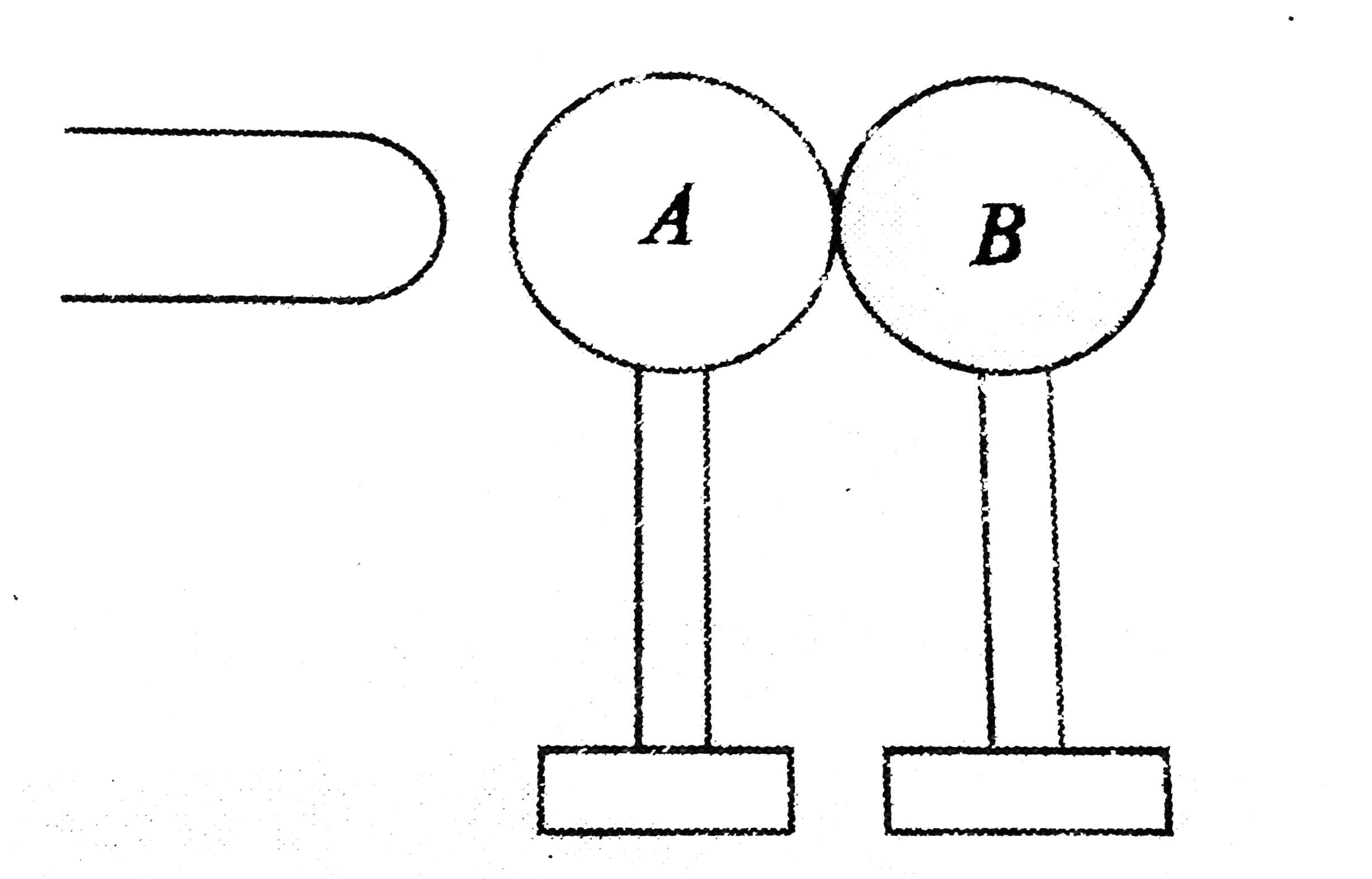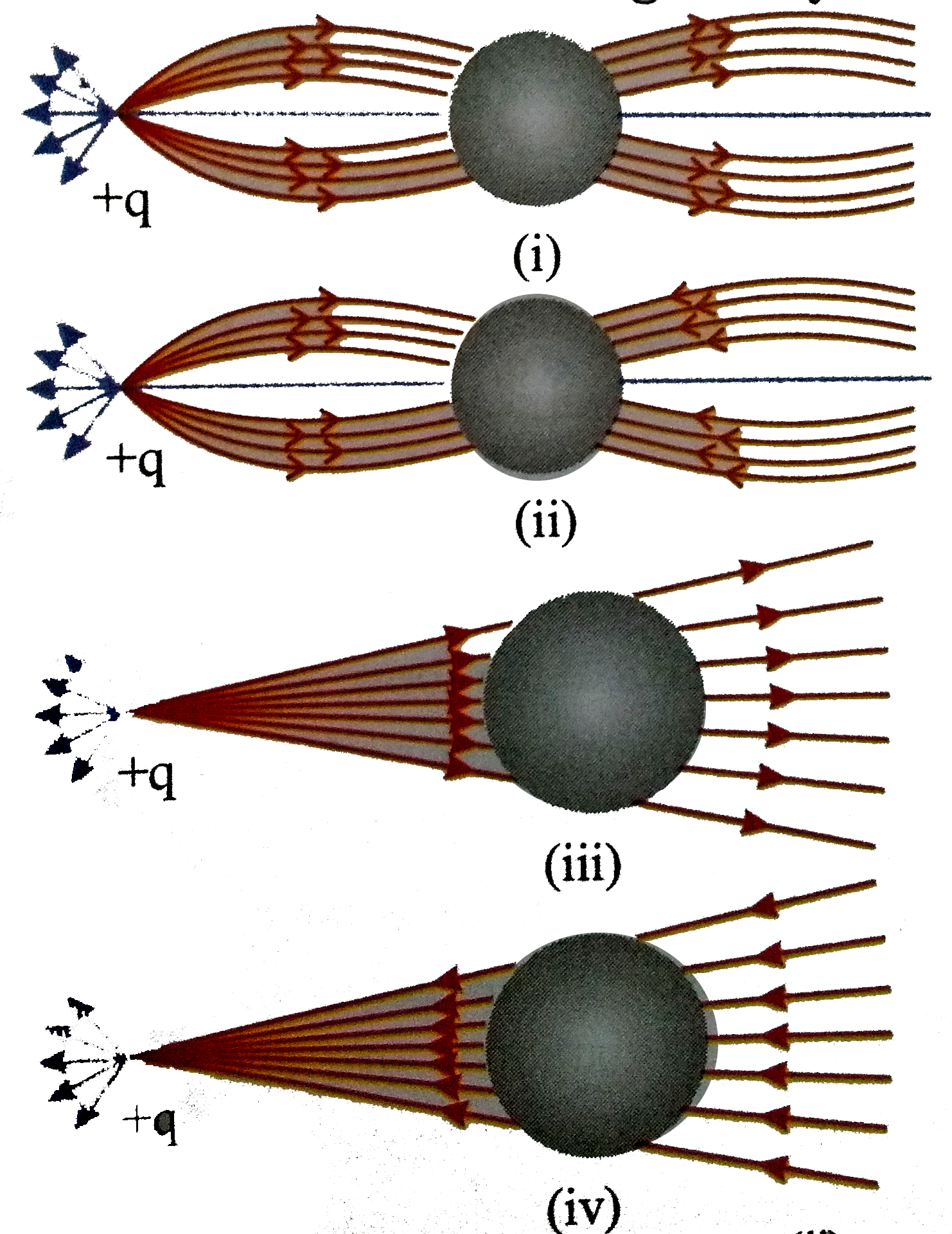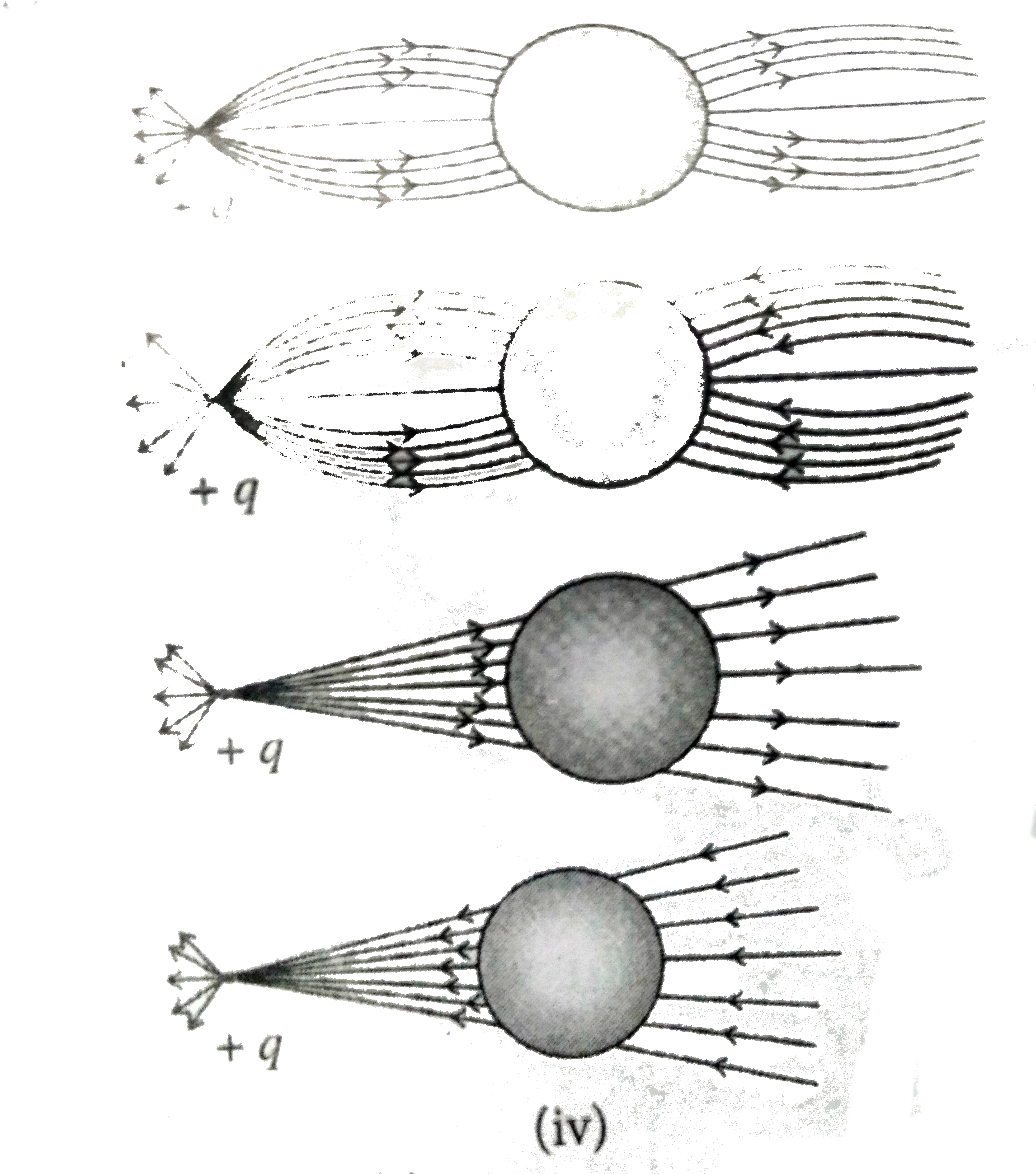Figure shows that a positively charged rod is brought near two ucharged metal spheres A and B clamped on insulated stands and palced in contact with each other.

(i) What would happen if the rod is removed before the spheres are separated?
(ii) Would the induced charges be equal in magnitude even if the spheres had different sizes or different conductors?
(iii) What will happen if the spheres are separated first and then the rod is removed far away?
(i) When a positively charged rod is brought near A, the free electrons in the sphere A are attracted toward the rod and moved to the leftside of A. This movement leaves unbalanced positive charged on B. If the rod is removed before the spheres are soparated. the excess electrons on spjere A would flow back to B. Both the electrons will becone uncharged.
(ii) Yes, net charge is conserved. Before the rod is brought near A both A and B were neutral. They will remain so even if they have different sizes or materials.
(iii) If the rod is removed after the spheres are separated, then sphere A will have net negative charge and sphere B will have net positive charge of same magnitude as shown in figure.
 .
.
Topper's Solved these Questions
- COULOMB LAW AND ELECTRIC FIELDBOOK - CENGAGE PHYSICS ENGLISHCHAPTER - COULOMB LAW AND ELECTRIC FIELDEXERCISE - Solved examples
10 Videos
- COULOMB LAW AND ELECTRIC FIELDBOOK - CENGAGE PHYSICS ENGLISHCHAPTER - COULOMB LAW AND ELECTRIC FIELDEXERCISE - Exercises
58 Videos
- CENGAGE PHYSICS DPPBOOK - CENGAGE PHYSICS ENGLISHCHAPTER - CENGAGE PHYSICS DPPEXERCISE - subjective type
51 Videos
- ELECTRIC CURRENT & CIRCUITSBOOK - CENGAGE PHYSICS ENGLISHCHAPTER - ELECTRIC CURRENT & CIRCUITSEXERCISE - Kirchhoff s law and simple circuits
15 Videos
Similar Questions
A positive point charge q is brought near a neutral metal sphere.
View SolutionWhen a positively charged sphere is brought near a metallic sphere, it is observed that a force of attraction exists between the two. It means that
View SolutionA positively charged body 'A' has been brought near a neutral brass sphere B mounted on a glass stand as shown in the figure. The potential of B will be :

View SolutionA positive point charge Q is brought near an isolated metal cube then what will happen to the charge of cube?
View SolutionEqual charges are given to two spheres of different radii. The potential will
View SolutionTwo identical metallic spheres X and Y with electrons supported on insulating stands and placed in contact. What kind of charges will be daveioped on X and Y when a negatively charged ebonite rod is brought near X?
View SolutionA point positive charge is brought near an isolated conducting sphere as shown in figure the electric field is best given by

View SolutionA point positive charge is brought near an isolated conducting sphere. The electric field is best given by

View SolutionA point positive charge is brought near an isolated conducting sphere as shown in figure the electric field is best given by

View SolutionWhen a positively charged rod is kept in contact with an insulated metal, the electrons move from the ........
View Solution
